DNS
DNS usually uses port 53
What is DNS?
 DNS working logic
DNS working logic
DNS is a domain name system that allows users to connect to websites using domain names instead of IP addresses. DNS, it is a system that resolves a domain name given to a fixed IP address.
1
2
PORT STATE SERVICE VERSION
53/udp open domain
How is DNS working?
- When “secybr.com” is typed in the address bar of the browser, a DNS Query is sent to determine the IP address of the website.
- This request is first asked to our computer’s DNS cache. If it is among the records, the remaining steps are skipped and automatically redirected to “secybr.com”.
- If it doesn’t have a record in our DNS cache, the query is sent to our local DNS server. This is usually the servers of our internet provider and they are called resolvers.
- If no DNS records are found in the resolver, the query is directed to another server called “Root Name Server” to find DNS records.
- Root Name Servers are the servers responsible for the storage of DNS data worldwide and the smooth operation of the system.
- After the DNS record is found by the root Name Server, it returns to our computer and is cached by our computer.
Common DNS Vulnerabilities
Like every system, there are security vulnerabilities on DNS. We will now review some of the major attacks on DNS servers.
DNS Zone Transfer Vulnerability
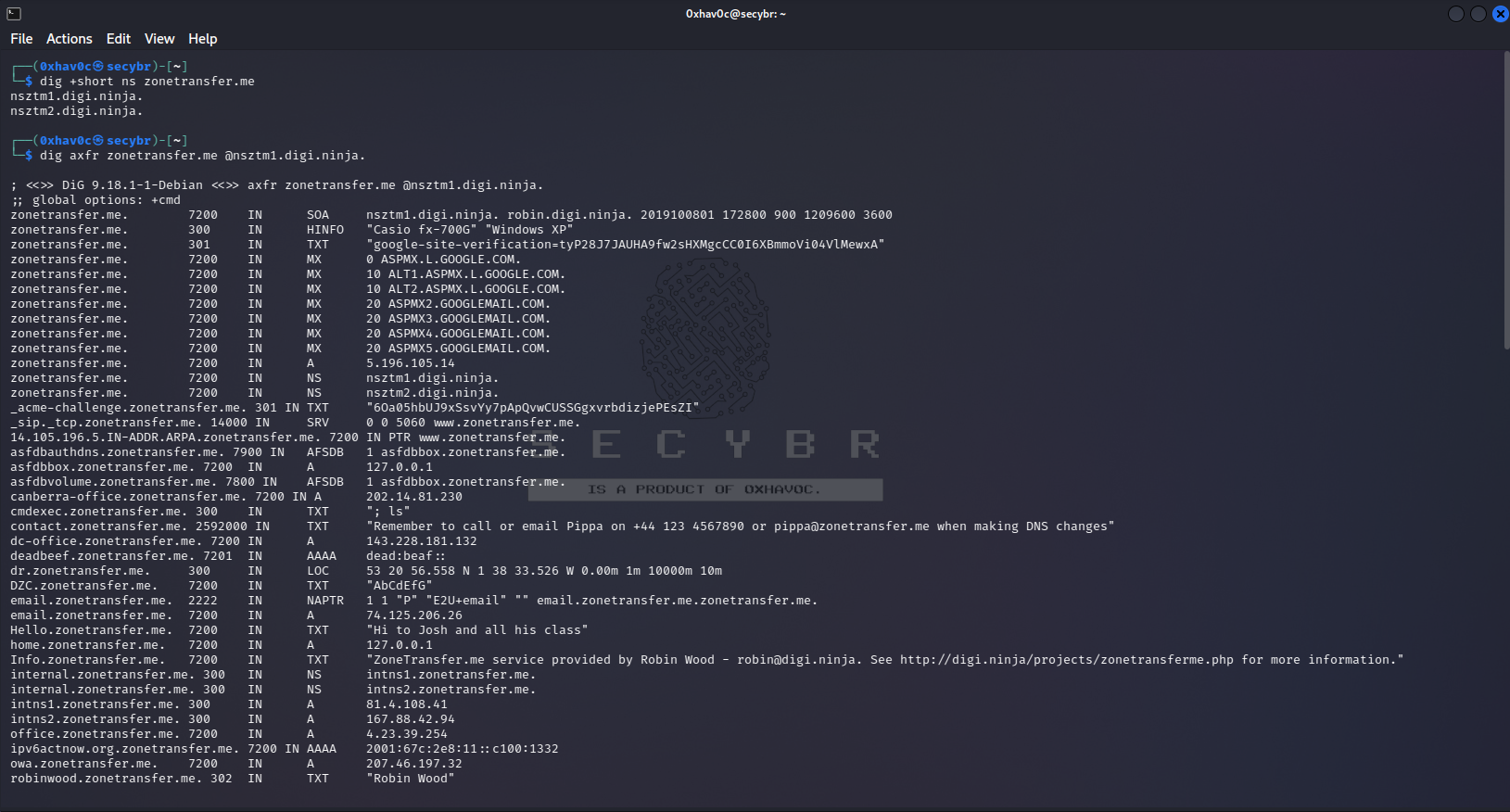 zonetransfer.me zonetransfer vulnerability detection with dig
zonetransfer.me zonetransfer vulnerability detection with dig
In some cases, DNS servers can share DNS records with each other over the AXFR protocol. There are two main reasons why DNS records are shared. One is load balancing and the other is what we call fault tolerance, that is, when a server becomes unserviceable, it is to ensure that the other server executes the operations. If unauthorized persons are allowed to perform DNS Zone Transfer due to lack of configuration, access to all address records entered in the DNS server may be in question. Thus, attackers can have information about systems with DNS records.
AXFR does not offer authentication, so any client can request a copy of all DNS records from a DNS server. This means that unless some form of protection is introduced, an attacker could get a list of all the servers for the domain and give them lots of potential attack vectors. To prevent this vulnerability from occurring, the DNS server must be configured to allow DNS Zone Transfer only from trusted IP addresses.
DNS Cache Poisoning
This vulnerability is a incorrect or intentional entry of information into the DNS cache. So DNS queries return an incorrect response and users are redirected to the wrong websites. E.g; If we think that an attacker has taken control of a DNS server, when he replaces the IP address of secybr.com with the IP address he created through the cache, he will direct users to the site he created instead of secybr.com. DNS servers use UDP protocol instead of TCP. These attacks can be very effective as there is no authentication method for the UDP protocol.
Windows DNS Server Remote Code Execution

Check Point security researchers have released a critical vulnerability affecting DNS servers with code CVE-2020-1350. What makes this vulnerability effective is that it has existed for 17 years. The attacker can send the DNS requests he created specifically to the target DNS server and run remote commands on the system with high authority. Malware can use this vulnerability to infiltrate systems and encrypt data. Considering that an estimated 140,000 DNS servers are open to the internet, you can imagine how big the attack could be.
DNS Pentesting
port:53 |
port:"53" "Recursion: enabled” |
Banner Grabbing
DNS does not have any “banners”. A query is available to detect the version. CHAOS TXT that will work on most BIND nameservers.
You can perform this query using dig:
1
dig version.bind CHAOS TXT @DNS
Zone Transfer Check
1
2
3
sudo nmap -Pn -sU --script=dns-check-zone -p 53 secybr.com #Port scan and trying zone transfer
dig axfr @<DNS_IP> #Try zone transfer without domain
dig axfr @<DNS_IP> <DOMAIN> #Try zone transfer guessing the domain
To Gather More Information With “dig”
1
2
3
4
5
6
7
8
9
10
dig ANY @<DNS_IP> <DOMAIN> #Any information
dig A @<DNS_IP> <DOMAIN> #Regular DNS request
dig AAAA @<DNS_IP> <DOMAIN> #IPv6 DNS request
dig TXT @<DNS_IP> <DOMAIN> #Information
dig MX @<DNS_IP> <DOMAIN> #Emails related
dig NS @<DNS_IP> <DOMAIN> #DNS that resolves that name
dig -x 10.10.x.x @<DNS_IP> #Reverse lookup
dig -x 2a00:1450:400c:c06::93 @<DNS_IP> #reverse IPv6 lookup
#Use [-p PORT] or -6 (to use ivp6 address of dns)
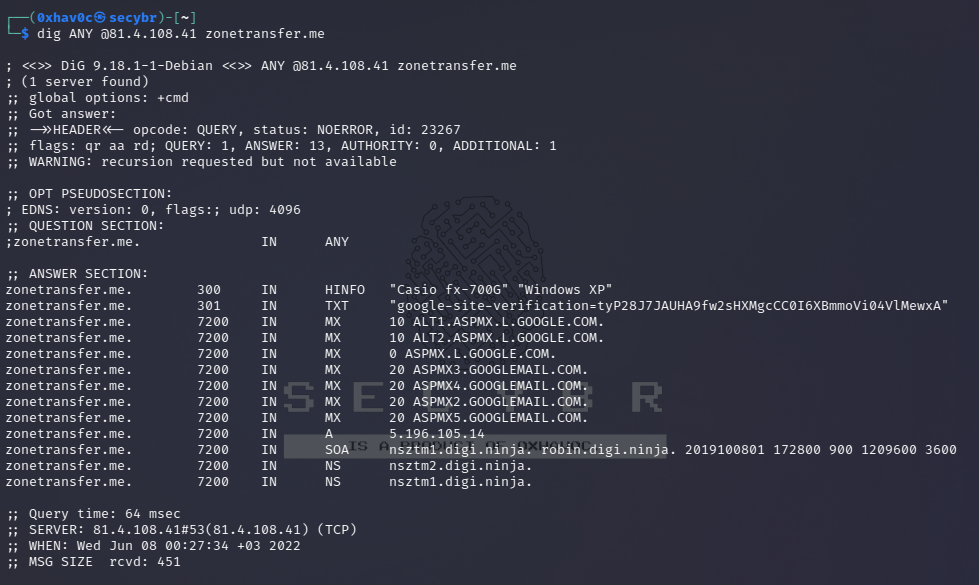
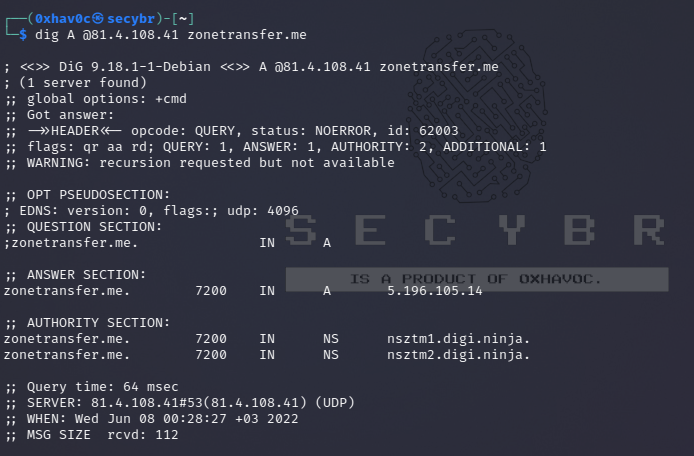
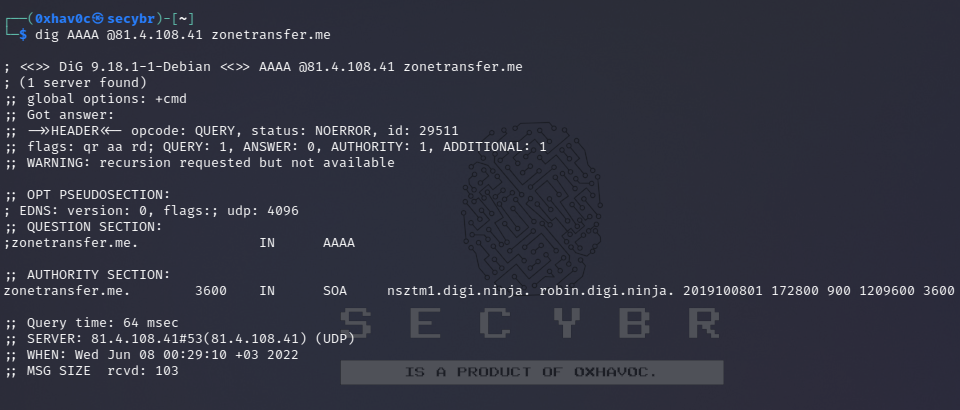
nslookup
1
2
3
4
nslookup
> SERVER <IP_DNS> #Select dns server
> 127.0.0.1 #Reverse lookup of 127.0.0.1, maybe...
> <IP_MACHINE> #Reverse lookup of a machine, maybe...
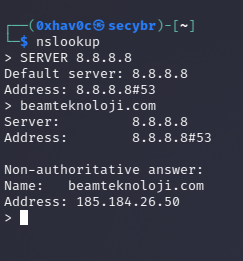
Useful Metasploit Modules
1
msf > use auxiliary/gather/enum_dns #Perform enumeration actions
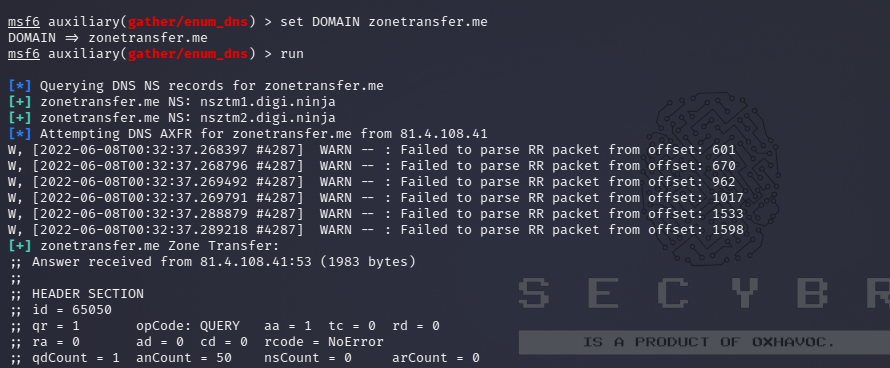
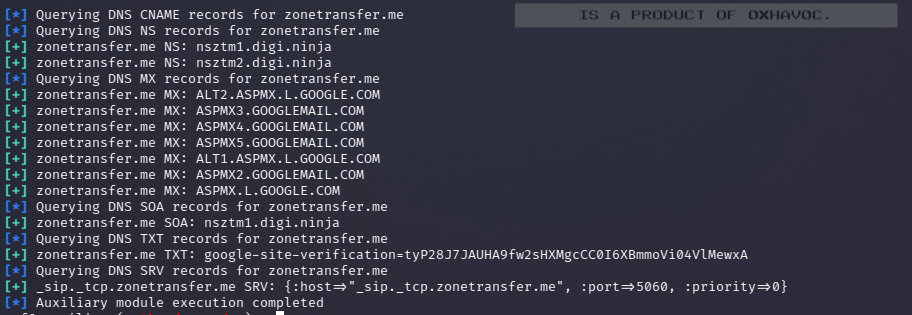
Useful nmap Scripts
1
sudo nmap -Pn -sU -n --script "(default and *dns*) or fcrdns or dns-srv-enum or dns-random-txid or dns-random-srcport" <IP_DNS>

To Gather More Information With “dnsrecon”
1
2
3
4
dnsrecon -r 192.168.x.x/24 -n <IP_DNS> #DNS reverse of all of the addresses
dnsrecon -r 192.168.x.x/24 -n <IP_DNS> #DNS reverse of all of the addresses
dnsrecon -r 192.168.x.x/24 -n <IP_DNS> #DNS reverse of all of the addresses
dnsrecon -d secybr.com -a -n <IP_DNS> #Zone transfer
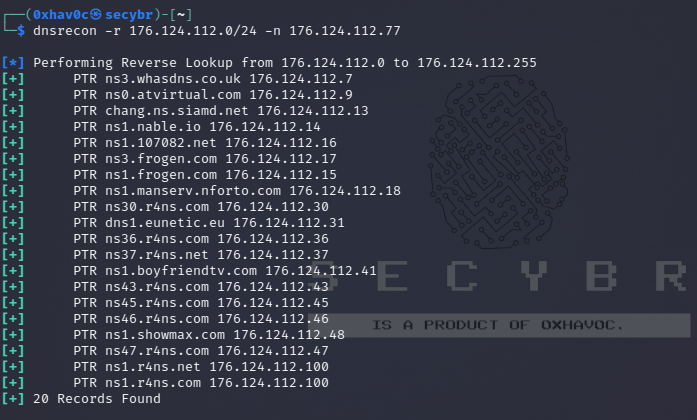
DNS Brute Forcing
You can use this tool for DNS brute forcing : dnscan
1
2
dnsrecon -D subdomains-1000.txt -d secybr.com -n <IP_DNS>
dnscan -d secybr.com -r -w subdomains-1000.txt #Bruteforce subdomains in recursive way,
Active Directory Servers
1
2
3
4
5
6
7
8
9
10
11
12
13
14
15
16
17
18
19
20
21
dig -t _gc._tcp.lab.secybr.com
dig -t _ldap._tcp.lab.secybr.com
dig -t _kerberos._tcp.lab.secybr.com
dig -t _kpasswd._tcp.lab.secybr.com
# Zone Transfer using dig
# Find AD-DS through DNS
# Global Catalog
dig -t SRV _gc._tcp.lab.secybr.com
# LDAP servers
dig -t SRV _ldap._tcp.lab.secybr.com
# Kerberos KDC
dig -t SRV _kerberos._tcp.lab.secybr.com
# Kerberos password change server
dig -t SRV _kpasswd._tcp.lab.secybr.com
nmap --script dns-srv-enum --script-args “dns-srv-enum.domain='lab.secybr.com'”
Finding Subdomains With nmap Scripts
1
nmap -sSU -p53 --script dns-nsec-enum --script-args dns-nsec-enum.domains=domain.com ns3.isc-sns.info
IPv6
Using brute force attack using “AAAA” requests to collect IPv6 of subdomains
1
2
dnsdict6 zonetransfer.me
dnsdict6 -s -t zonetransfer.me
https://github.com/vanhauser-thc/thc-ipv6

Bruteforce reverse DNS in using IPv6 addresses
1
dnsrevenum6 pri.authdns.ripe.net 1301:37d:2e8::/48 #Will use the dns pri.authdns.ripe.net
DNS Recursion DDoS
If DNS recursion is enabled, an attacker could spoof the origin on the UDP packet in order to make the DNS send the response to the victim server. An attacker could abuse ANY or DNSSEC record types as they use to have the bigger responses.
1
2
# Check DNS Recursion available
sudo nmap -Pn -sU -p 53 --script=dns-recursion <IP_DNS>
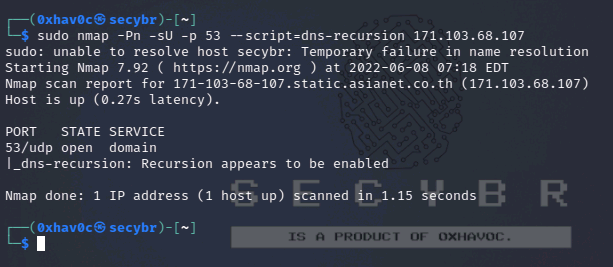
The way to check if a DNS supports recursion is to query a domain name and check if the flag “ra” (recursion available) is in the response:
1
dig secybr.com A @<IP_DNS>
Non available:
 there is no “ra” flag. So there isn’t vulnerability it says that it has already thrown the recursion request in the logs and that it is not available.
there is no “ra” flag. So there isn’t vulnerability it says that it has already thrown the recursion request in the logs and that it is not available. WARNING: recursion requested but not available
Available:

To Gather More Information with Fierce
You can take Fierce from here
1
2
3
4
5
6
7
8
fierce --domain twitter.com --subdomains accounts admin ads
fierce --domain facebook.com --subdomains admin --traverse 10
fierce --domain facebook.com --subdomains admin --search fb.com fb.net
fierce --domain stackoverflow.com --subdomains mail --connect
fierce --domain facebook.com --wide
fierce --domain zonetransfer.me
fierce --domain zonetransfer.me > output.txt
fierce --dns-servers 10.0.0.1 --range 10.0.0.0/24

Comments powered by Disqus.